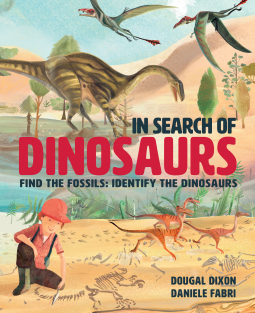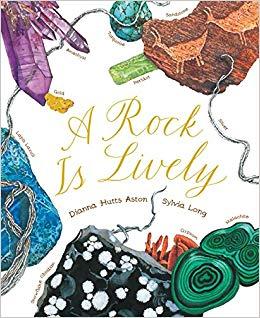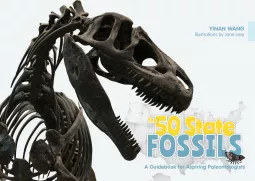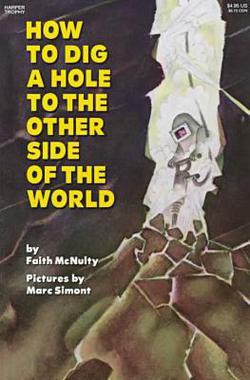
scrounge: /skrounj/ informal verb: to actively seek [books] from any available source

Living with a dinosaur fan can be fun, and I know I've been exposed to and learned so much more about dinosaurs and fossils than I ever did as a kid, thanks to my son taking an interest in them. In Search of Dinosaurs is a dinosaur book that helps to make some connections between the artistic recreations of Mesozoic animals that we see and the fossil dig sites where information about these creatures and environments is collected.
There is a section for each of the three time periods in the Mesozoic Era, and each follows the same format. First we see an artist's recreation of a hypothetical fossil dig. On the next few pages, we see scenes (without text) of what these animals may have looked like when they were alive. This gives readers the opportunity to go back and forth between the fossils and creatures and see if they can figure out which of the living creatures (or parts of them) are represented in the dig.
These scenes are followed by smaller pictures and information blurbs about each creatures -- mostly dinosaurs, but also some other animals such as Cretaceous turtles, as well as ammonites, metaposaurus, a small mammal, etc. There are plenty of good tidbits of information here, but they're presented in a way that's easy to follow. Since the fossils are presented "in context," we also learn a bit more about the kinds of things paleontologists find in digs, and some of the ways they can find clues as to the dinosaurs' behaviors and environments.
(Thanks to NetGalley for the review copy.)
Scrounged From: NetGalley
Format: Kindle
Author: Dougal Dixon
Pages: 44
Content Advisory: None

I can't say that "lively" would be my first choice for "best words to describe rocks," but I also wouldn't have considered the pyramids of Giza in the same thought as comets either, yet both are neatly contained within this succinct exploration of rocks.
I really love this series. A Rock Is Lively takes us on a journey to discover and ponder the scope of rocks, from sandy beaches to asteroids. Like A Seed Is Sleepy (see my review here), the variety here is impressive and awe-inspiring, without being overwhelming. The illustrations are gorgeous, capturing the colors and sparkles of gems as well as the numerous earth tones of more "ordinary" rocks.
We learn about the rock cycle, what rocks are made of, where we can find rocks, and some of the things rocks are used for -- from tools for animals and people, to use as art and weapons throughout history. Phrases like "A rock is inventive..." are the only places I'd consider that this diverges a bit from strict nonfiction, but that's forgiveable because the poetic descriptions add a lot to this book and make it a bit more "lively" than your average geology book. I really love that this series makes topics like this interesting and accessible to small children, but also teaches us older people a thing or two, even if it's just to say "Wow!"
Scrounged From: A Christmas present
Format: Paperback
Author: Dianna Hutts Aston
Illustrator: Sylvia Long
Pages: 40
Content Advisory: None

We enjoy reading about dinosaurs and fossils around here, so I found The 50 State Fossils: A Guidebook for Aspiring Paleontologists not only a great introduction to fossils, but also a unique viewpoint on American geography. Since fossils are found all over the world, it's sometimes hard to remember which dinosaurs roamed when and where, etc. This book helps to give fossils a distinctly American context.
Of course, while dinosaurs are probably the most famous and cool fossils out there, the general category of "fossils" involves a lot more: mammoths and other ancient mammals, plants, shells, footprints, and more. It was interesting to read about which kinds of fossils are more common in which states. For the few states that do not yet have an official state fossil or dinosaur, the book gives a brief history of attempts as well as a suggestion or two of what might make a good choice. I really had no idea what my state's fossil was, so I appreciated getting the chance to read more about it (pertica -- a unique plant).
There is a page here for each state, which includes the fossil name, scientific name, time period, a couple illustrations and/or photos, and a several-paragraph description. The beginning of the book gives some information about how fossilization occurs, time periods, etc., while the end of the book includes a glossary and also a list of places (such as museums), per state, where you can visit to see fossils. Very cool and informative!
(Thanks to NetGalley for the review copy.)
Scrounged From: NetGalley
Format: Kindle
Author: Yinan Wang
Illustrator: Jane Levy
Pages: 64
Content Advisory: None

How to Dig a Hole to the Other Side of the World was written by Faith McNulty, and illustrated by Marc Simont in 1979. This book is the perfect mix of silliness and scientific instruction for children, and is recommended for ages 4 to 8.
I remember, as a child, wondering if it was possible to dig a hole "to China" (never mind that I'm not geographically opposite China -- that was always "the other side of the world" to us). I think every child wonders this at some point. This book explores the challenges we would face in digging such a hole, and describes the things we would discover as we did so.
Along the way, we learn about different kinds of rocks, and about volcanoes and geysers, which gave rise to all sorts of questions when we read this to our then-3-year-old.
As you progress in your journey through the earth, you have to go from digging with a shovel to digging with a jackhammer, to wearing an asbestos suit (this book was written before asbestos-based fire-proximity suits were phased out in favor of other materials), to riding in a submarine with a super-cooling system, a fireproof skin, and a drilling mechanism.
All in all, this book does a great job of introducing young children to the size and structure of our planet in an engaging way, and provides launching points for discussion of further topics.
Scrounged From: PaperbackSwap.com
Format: Paperback
Author: Faith McNulty
Illustrator: Marc Simont
Pages: 32
Content Advisory: None

